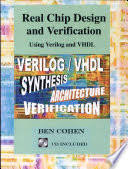A Comprehensive White Paper on Chip Design and Verification
Introduction
Chip design and verification are critical stages in the development of integrated circuits (ICs), which form the backbone of modern electronic devices. This white paper aims to provide a detailed overview of the key aspects involved in chip design and verification, including the design flow, verification methodologies, and challenges faced by engineers in this field.
Chip Design Flow
The chip design flow is a systematic process that involves several stages:
- Specification: This stage involves defining the functional requirements and performance goals of the chip.
- Architectural Design: The high-level structure of the chip, including its components and their interconnections, is determined.
- Logic Design: The detailed design of the logic circuits that implement the chip's functionality is carried out.
- Physical Design: The placement and routing of the physical components on the chip are optimized to meet timing and power constraints.
- Verification: The chip's functionality and performance are thoroughly tested to ensure that it meets the specified requirements.
Verification Methodologies
Verification plays a crucial role in ensuring the correctness and reliability of chips. Several methodologies are employed in the verification process:
- Simulation: This involves creating models of the chip and its environment to simulate its behavior under various conditions.
- Formal Verification: This technique uses mathematical methods to prove the correctness of the chip's design.
- Emulation: This involves creating a hardware-based model of the chip to execute its code in real-time.
- Hardware Acceleration: This technique uses specialized hardware to speed up simulations and other verification tasks.
Challenges in Chip Design and Verification
Chip design and verification are complex tasks that present several challenges:
- Increasing complexity: Modern chips are becoming increasingly complex, with billions of transistors and intricate designs.
- Time-to-market pressure: The demand for new and improved chips is intense, putting pressure on engineers to deliver products quickly.
- Power consumption: Reducing power consumption is a critical concern in many chip designs.
- Verification completeness: Ensuring that all possible scenarios have been tested is a difficult challenge.
Emerging Trends
Several emerging trends are shaping the future of chip design and verification:
- System-on-chip (SoC) design: Integrating multiple subsystems onto a single chip is becoming increasingly common.
- Heterogeneous integration: Combining different types of components, such as digital and analog circuits, on a single chip.
- Advanced verification techniques: New methods, such as machine learning and formal verification, are being developed to address the challenges of verification.
References
- IEEE Standard for SystemVerilog—A Hardware Design and Verification Language (IEEE Std 1800-2017)
- Understanding Digital Design by Thomas W. Williams
- Digital Integrated Circuit Design by Jan Rabaey, Anantha Chandrakasan, and Borivoje Nikolic
- Formal Verification: A Guide to Industrial Practice by Daniel Kroening and Ofer Strichman
Note: This white paper provides a brief overview of chip design and verification. For a more in-depth understanding, it is recommended to consult the references listed above and other relevant literature. contact ias-research.com for details



